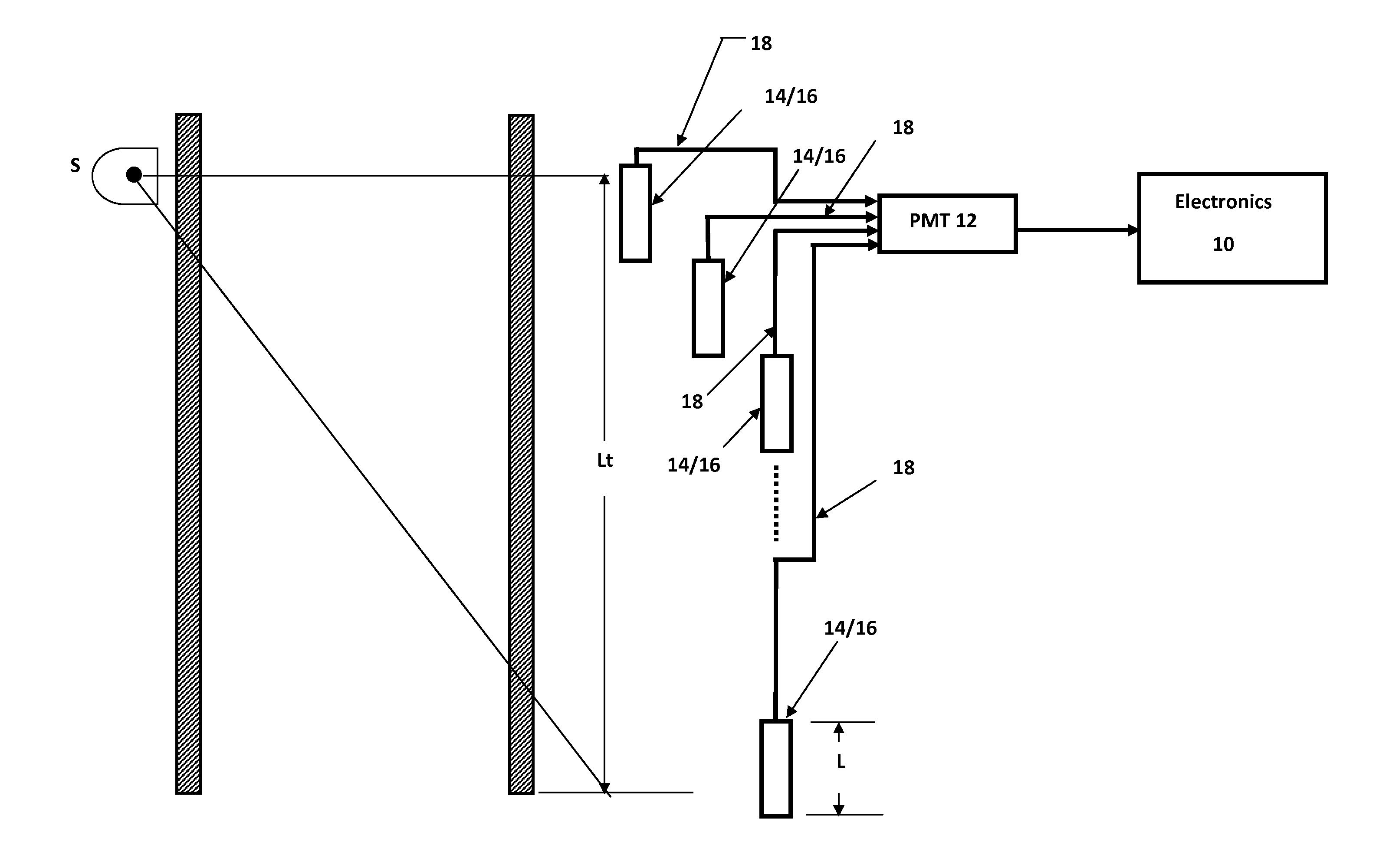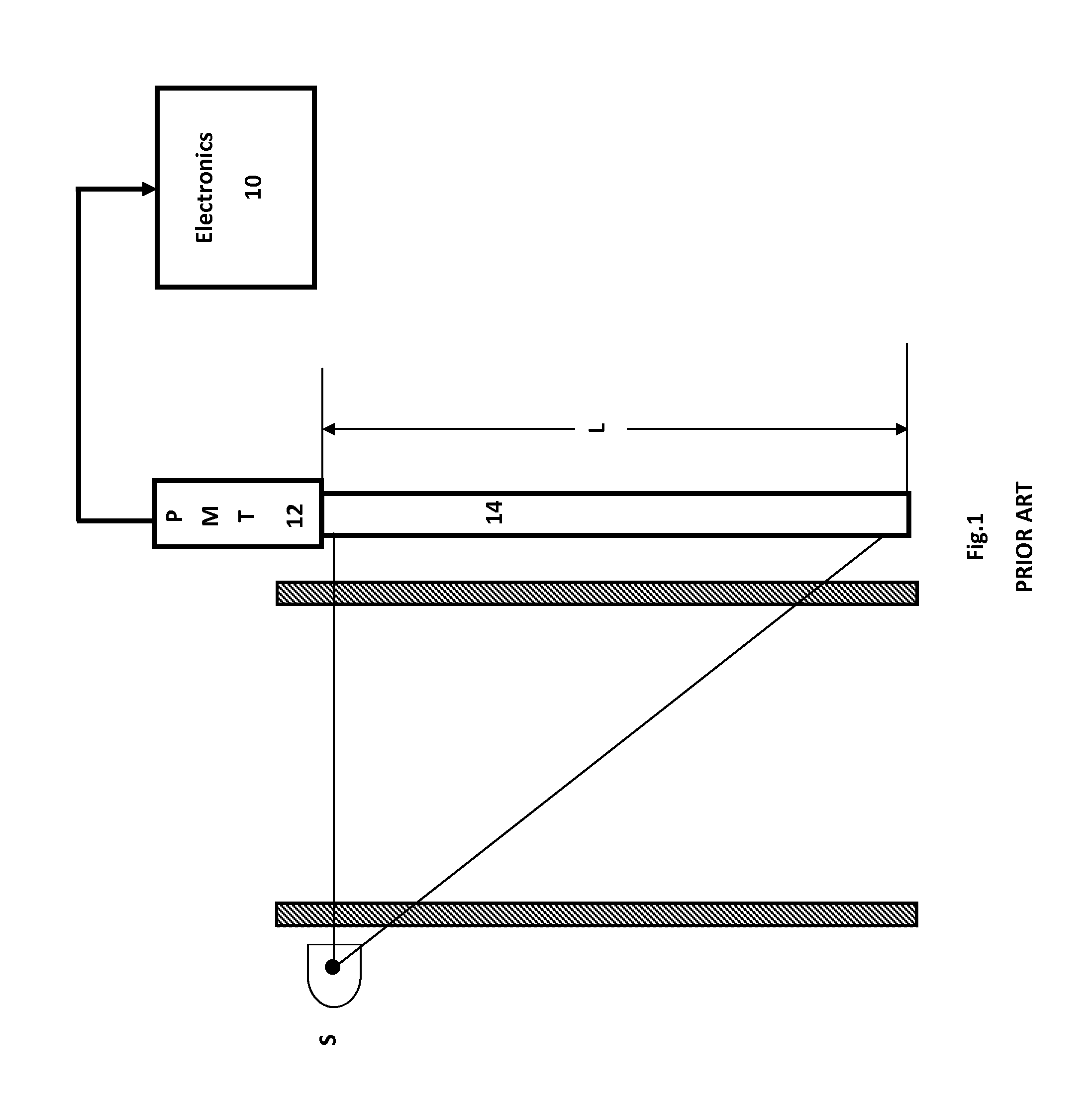Segmented Fiber Nuclear Level Gauge
a level gauge and segmented fiber technology, applied in the direction of liquid/fluent solid measurement, material analysis using wave/particle radiation, instruments, etc., can solve the problems of high complexity and cost, rigid crystals, and difficult custom manufacturing,
- Summary
- Abstract
- Description
- Claims
- Application Information
AI Technical Summary
Benefits of technology
Problems solved by technology
Method used
Image
Examples
Embodiment Construction
[0023]FIG. 6 shows a level sensing gauge in accordance with the present invention. In this gauge, plural scintillators 14 / 16 are arranged in a serial fashion to detect radiation passing through the bin. These scintillators may be crystals or fiber bundles (e.g., bundles of greater than 300 fibers in a 1 inch diameter bundle), or may be a mixture of crystals and fiber bundles, as suits a particular application. Importantly, the scintillators can be sized so that none is longer than the attenuation length of the scintillator medium.
[0024]In contrast to the prior art systems shown in FIGS. 5 and 6, the invention greatly simplifies the detection of light from the scintillators by coupling the light from each scintillator via a light guide 18 to a common photomultiplier tube 12. The light guide may be of glass or acrylic / PMMA, for example, optimized for the light wavelength that is generated by the scintillators.
[0025]Thus, the invention uses multiple scintillators but simplifies the ele...
PUM
| Property | Measurement | Unit |
|---|---|---|
| length | aaaaa | aaaaa |
| diameter | aaaaa | aaaaa |
| attenuation length | aaaaa | aaaaa |
Abstract
Description
Claims
Application Information
 Login to View More
Login to View More - R&D
- Intellectual Property
- Life Sciences
- Materials
- Tech Scout
- Unparalleled Data Quality
- Higher Quality Content
- 60% Fewer Hallucinations
Browse by: Latest US Patents, China's latest patents, Technical Efficacy Thesaurus, Application Domain, Technology Topic, Popular Technical Reports.
© 2025 PatSnap. All rights reserved.Legal|Privacy policy|Modern Slavery Act Transparency Statement|Sitemap|About US| Contact US: help@patsnap.com



